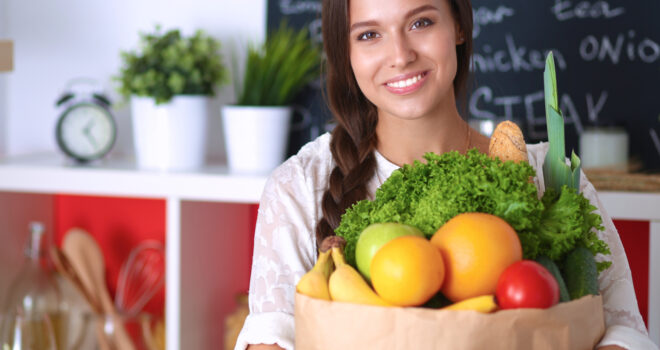The nudge theory was developed in behavioural economics. The principle is simple: to influence our behaviour in our own interest. An experiment revealed that this stratagem can increase the amount of fruit and vegetables purchased by up to 15% in young adults.
Rather than telling people what to do, you’re better off helping them to achieve their objectives by giving them a gentle nudge in the right direction, even though they are unaware of it. That is the main principle of the nudge theory, which was developed by Richard Thaler, an economist from the University of Chicago. Researchers from the University of Warwick, in the United Kingdom, applied this theory over a five-year period on a university campus. More specifically, they examined whether a change in the architecture of the campus grocery store would influence the students’ purchases. And it did: when you make fruit and vegetables more accessible, this will affect the purchasing behaviour, increasing the amounts of fruit and vegetables sold.
See also: A vegetable’s name can encourage you to eat it
Originally this was the distributor’s choice
The changes made to the position of fruit and vegetables in the Rootes grocery shop in Warwick meant that they were moved to the front of the store, near the entrance. The study is original because the decision was made without the underlying objective of conducting a scientific experiment or deliberately encouraging students to eat more healthily. The researchers at the University of Warwick thus simply verified their nudge hypothesis in an already existing, non-experimental setting. The change was not advertised. In practice, the researchers collected data about the store’s takings (from January 2012 to July 2017) to study the sales before, during and after the changes were made to the store’s layout.
The nudge leads to a sustained increase in sales without explicit messages
Based on the data collected, the researchers concluded that the percentage of total sales that corresponded to fruit and vegetables was higher, both in terms of the number of items sold and the overall takings. Students purchased approximately 15% more fruit and vegetables compared with before the intervention. Better still, the increased sales of fruit and vegetables after they were moved could be maintained over time. This means that such a change could be an interesting way of improving the nutritional quality of the food intake of young adults.
The authors think this type of nudge-style intervention is a population of young adults is particularly appropriate, as it does not limit the choices and does not require them to think about what they are doing. The results are all the more interesting as the increased intake of fruit and vegetables is a very difficult subject to understand, and also because this age group tends to eat less of them.



 Tomato
Tomato  Carott
Carott  Vegetable garden: growing chestnuts
Vegetable garden: growing chestnuts 









